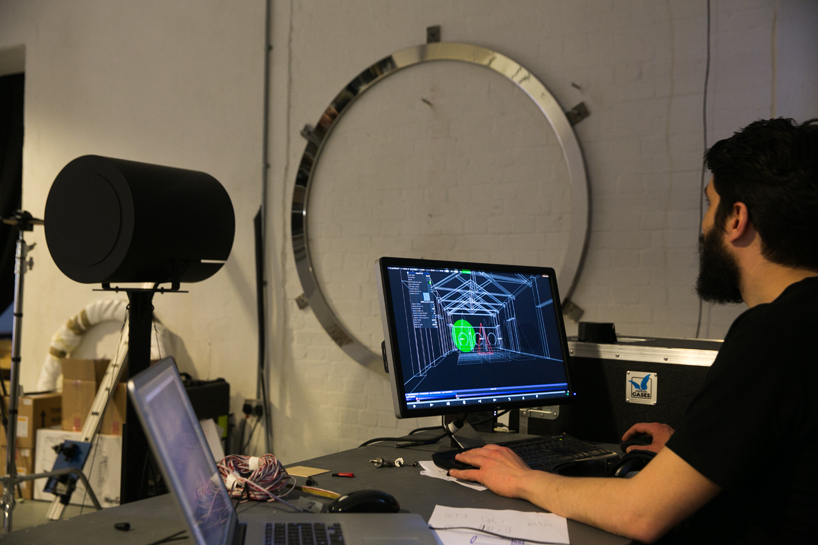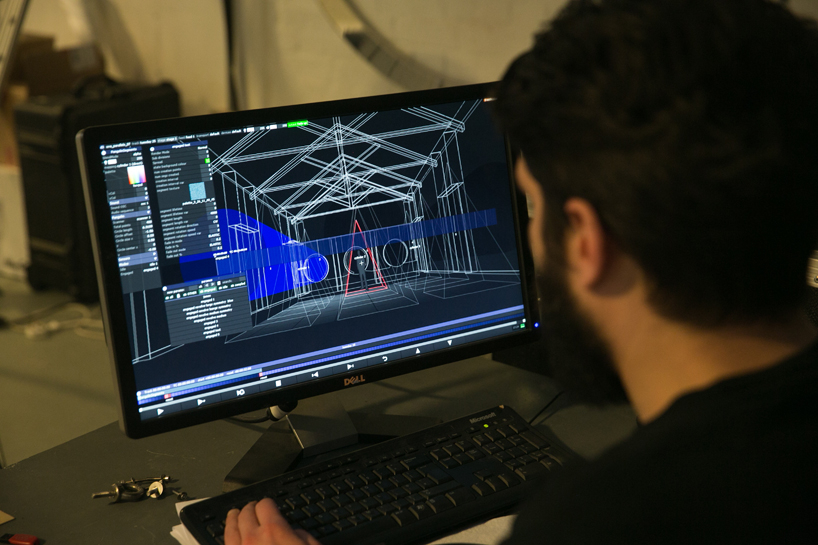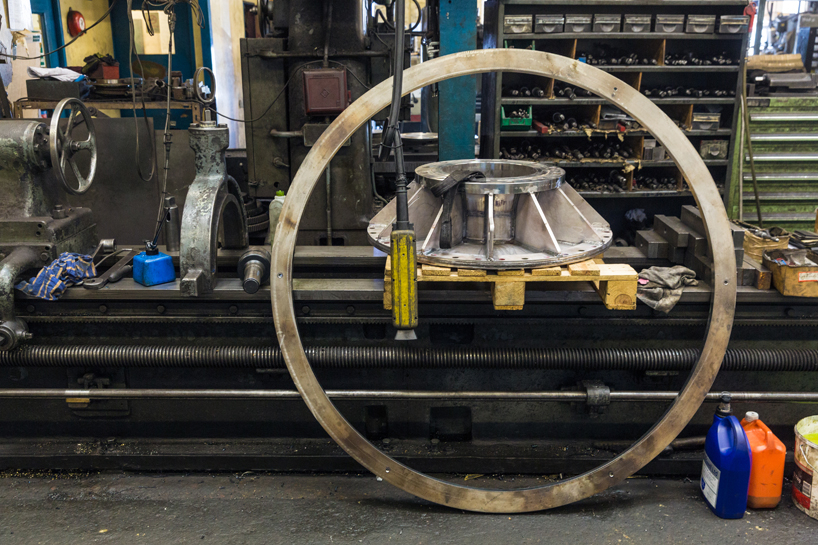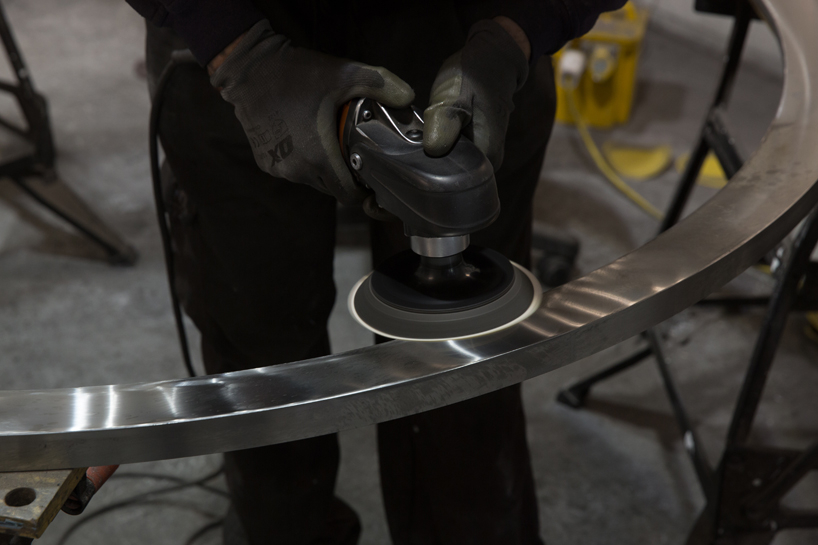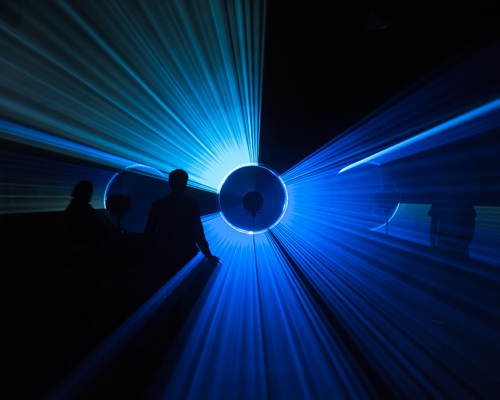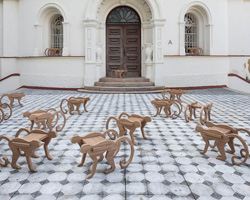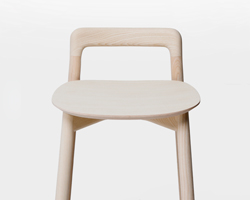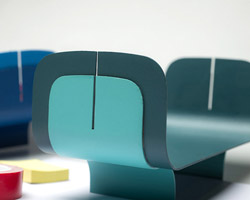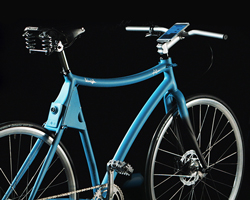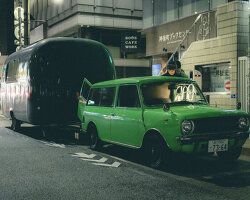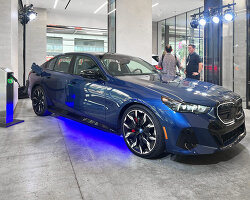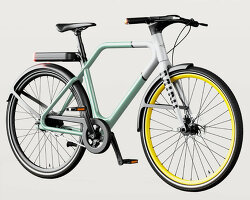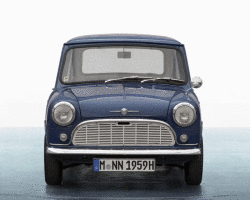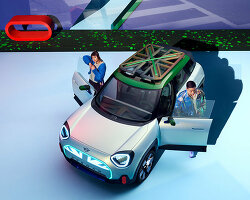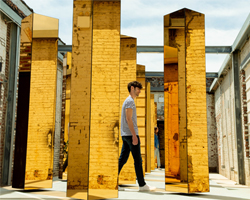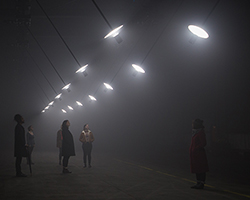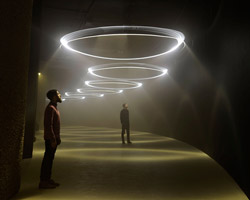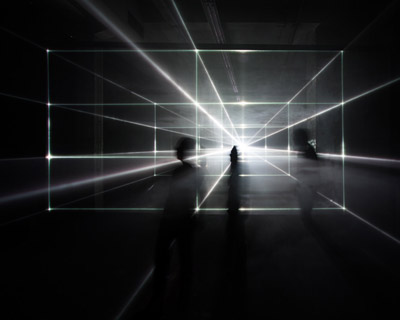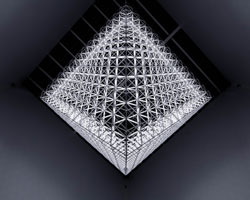MINI and united visual artists present interactive ‘parallels’ laser and sound installation
all images courtesy BMW group
using milan design week to showcase its future-thinking design perspectives, MINI has joined forces with london-based art and design collective united visual artists (UVA) to present ‘parallels’, an immersive sound and laser installation led by head of MINI design, anders warming. opening a window into mobile connectivity, the three-part interactive intervention is based on UVA’s creative interpretation of MINI’s in-car infotainment system, which stimulates dialogue on the possibilities generated by digitally interconnected mobility.
in two exclusive interviews, designboom talks to anders warming, head of MINI design and alexandros tsolakis from UVA, on the technology of the laser projection installation at magazzini di porta genova in milan.
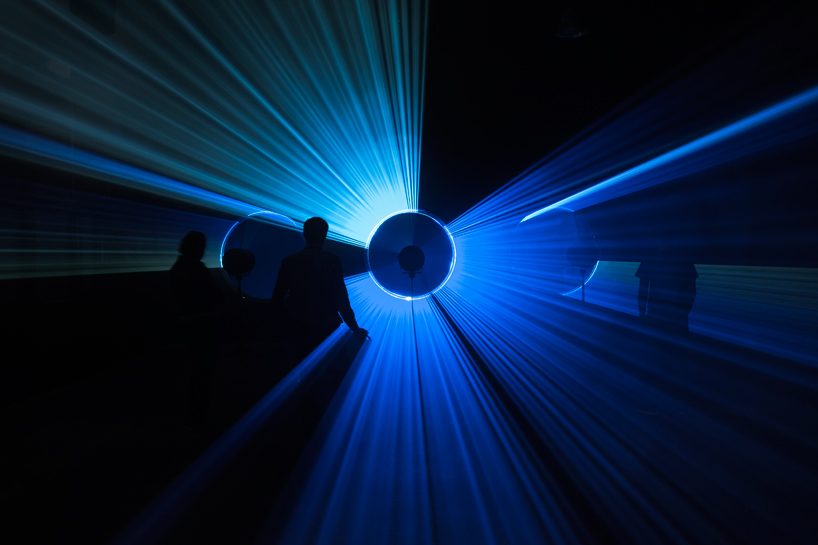
designboom (DB) : can you explain the concept behind the project?
anders warming (AW) : at this years fuorisalone. we’re introducing an installation. it’s called MINI parallels, and it’s inspired by the world of being connected. in the new MINI, you experience icons, one of which is, the round display. this one we’re feeding with the central display with LED technology, which we use to communicate two things: function and mood. with the MINI parallels installation, we’re using the technology of lasers to create a three dimensional space inside of this round element. you get an experience of something that’s to come, a mood, a feeling, but also factual things, an impression of technique and precision, but at the same time a spiritual experience.
alexandros tsolakis (AT): you experienced the art installation. let’s start with that — for example, we thought about sun beams coming through your windows. who hasn’t seen that? but, how can you turn that into something you can play with, and manipulate? for us, in this case, it was about a relationship with technology – that was how this evolved over time – how we can question it. the whole story can start with what the computer scientists wrote back in 1940 when they started predicting what was [happening] back then and what became true [for] right now. they did predict the mouse, the internet, so many things, but with a different way of envisioning. actually, all of these are coming true. while they were coming true, they start working, creating worlds around us. you go into your room, you put the radio on back in the day, and the whole room felt different. you go into your living room, you pick up the phone, back in the day again, and you connect with someone else, and all of a sudden the world becomes straight, becomes different from what you see. in that is a metaphor of how technology creates the world around us, the world that is not only material, but is also immaterial. we believe that technology will become more and more immaterial. it’s not only about the devices – they will change over time, and maybe there will be a time when we don’t need these devices because technology will understand us even without holding them or pushing buttons on them.
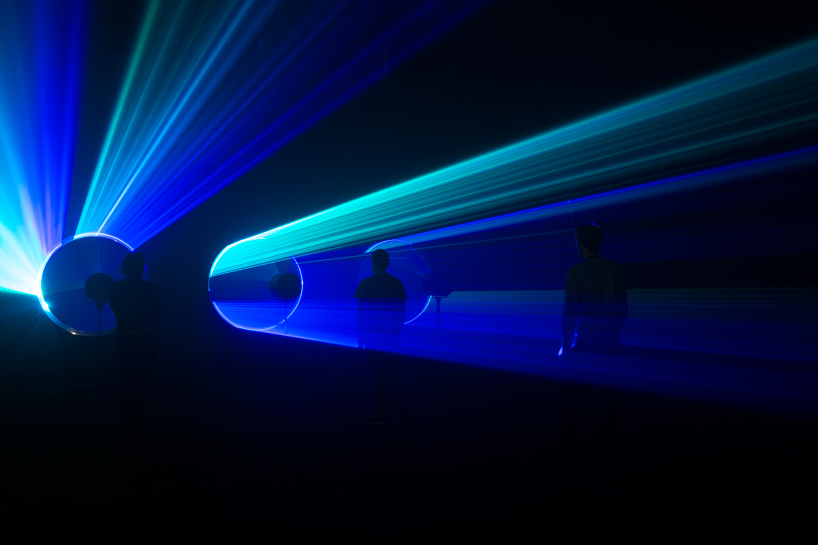
DB: in which part does technology play a role in the installation, for example, what set-up and materials are used?
AW: a very interesting thing about this display is that the technology is a laser projected onto a traditional surface – steel. that transfer of information gives you the form projecting back in space. in today’s world you actually use laser technology to cut very precisely, but this is the inverted way of using lasers. here the the steel ring has been made by hand on an old lathe, and hand polished. so you actually turn it the other way around and hand build the ring then project the laser onto the surface. the lasers come from a central spot in front of the ring, projecting out as a cone onto the ring, and then it shoots back in space and you have this complete parallel projection of a laser beam, but you, as a person, are inside of that laser beam. the black thing at the center is the source of the laser, where the dangerous part is because you shouldn’t get to close, and you definitely shouldn’t look into it. but, after the projection you’re safe. the lasers are being used in the proper way here in this installation.
video © designboom
DB: MINI approached you with the idea to design something MINI connected and convey that in a physical installation. where did you get the idea of bouncing light back with lasers?
AT: it all comes from previous work, but also the relationship with MINI connected – it’s pretty obvious, [so] you don’t have to actually state it. the way that you interpret things always depends on your medium. our medium, in this case, was that. we use other mediums, but one of them is those lasers. the project feels technological, but you never clearly know what is happening, and that is important for us. it’s up to you to experience. because light is our medium, we started developing different techniques, different bodies of work. this one uses a lightometer that projects really narrow beams of light. we used techniques, which has a reflector ring, which was milled with precision in order to bounce back the light, and create this uniform cylinder, and that was the most challenging thing of this project. you can create something that is precise, so that the tool that you use in order to take precise measurements won’t be able to detect the difference. we used laser measurers and laser pointers and laser cutters in order to create or precisely measure the elements. how do you create something that is machined and milled that actually has a precision that [mimics] the laser? that was the changeling part of this installation, and that’s a part about which we’re extremely happy.
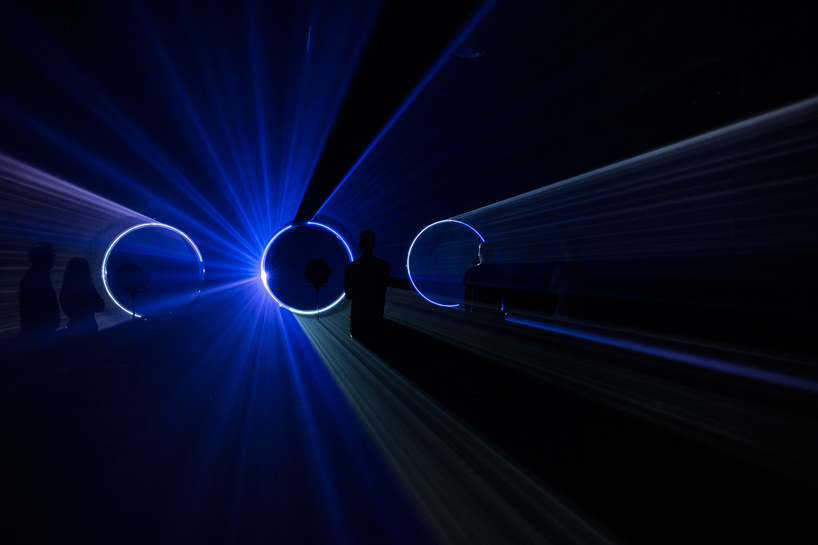
view of the three laser rings
DB: in terms of the design process was MINI more involved than UVA, or was it a 50/50 collaboration?
AW: the premise was given by MINI as far as the communication of the round display and the technology, especially the mood, and being connected, which is a very important part of driving the new MINI. with that, UVA being this creative laboratory, used our information to generate this project. we’ve been there several times visiting them in london, but basically let’s say the creative hub for this installation came from united visual artists (UVA). the lead for the project is alexandros tsolakis who is a very creative, thoughtful guy, very philosophical, but at the same time mathematical in his thinking.
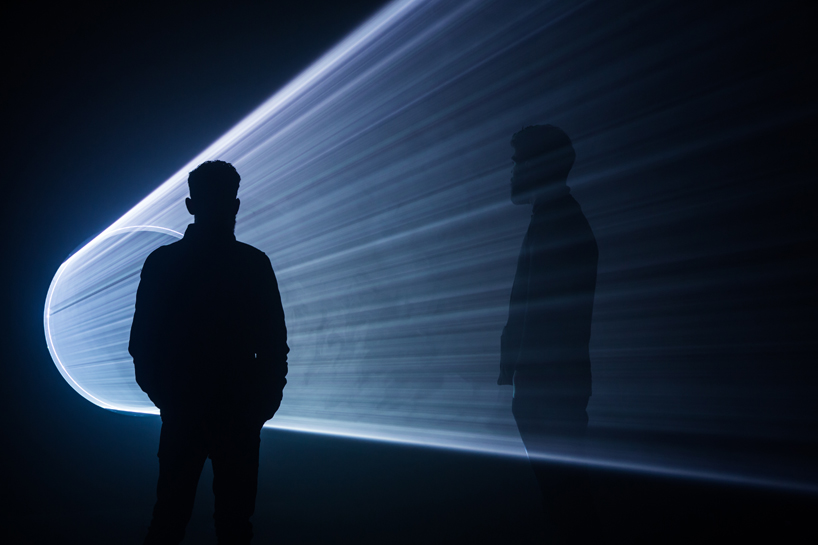
each ring bounces back a diffused laser beam to create a light tube
DB: where did the idea of the projection originate?
AW: the idea came from UVA, from alexandros, as far as working out a main story for the round display. we found out that lighting and its round element is the main purpose or focus. at the same time, we knew that we were going to have to use the most advanced tool, a laser, which is not easy, it’s a very finicky technology. it has to be extremely precise, and the manufacturing of everything that went into this installation required the utmost precision.
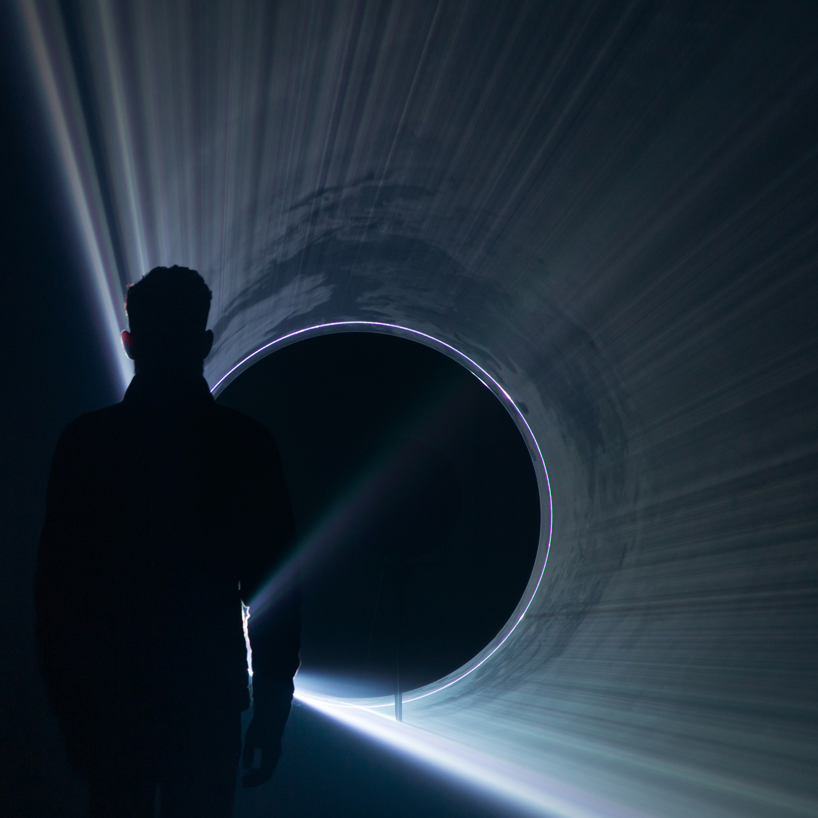
DB: what were some of the biggest challenges in terms of the design complexity?
AW: the big challenge was to create an installation that is not a discotec, something that is not emulating a night club. it has to have a high level of aesthetics. that means that the calculations that have been done like an art installation, and not as entertainment. it’s very very important. the fun you feel is not from the blinking light, the fun is the feeling you get from the inside, when you are inside of this tube. for us it was a big thing. we kept talking about ‘not turning it into a discotec or disco lighting, because that wouldn’t fulfill the purpose, nor the intellectual level that goes into engineering, to mathematics, and to philosophy.
AT: one of them was a physical challenge in itself. the second one is how you can actually bring together all these elements of a multi-sensory experience. how do you make sound work together with the light and the space. in this case it’s only particles in the atmosphere, nothing else. so again, it’s like building a space in architecture, but there is no physicality.
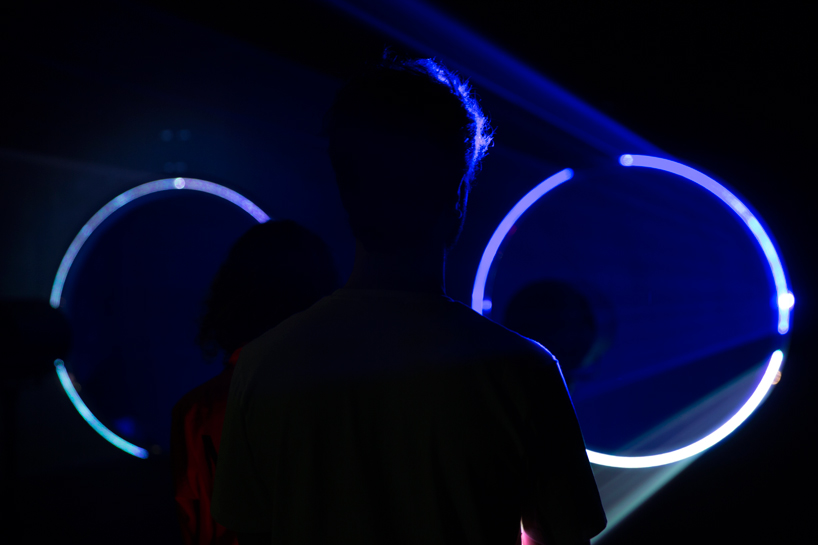
DB: what about the sound?
AT: I must definitely go back to the sound, which was a very important element of this installation, made by mira calix, a good friend, a collaborator. we first met back in 2008, late 2008. she is an awarded composer. we work together quite often. she worked with us on the momentum installation at the barbican, and we did work together on a previous project. the sound is so tight with the lighting element, so it’s unique. the installation works as an independent voice until they all come together, which are the white parts of the installation where they’re all in unison.
mira calix (MC) : the sound is making it as a whole, which is often very important. I think the connection between this sort of visual representation of the sound and how the lasers and how the patterns and sound are completely in sync. it’s obviously one very important thing, technically speaking. then it takes on the ethos of what the installation is about. that’s one big reason why I used voice, and I felt that way instinctively from the beginning that I really wanted to have that vocal presence in the room. we all instinctively relate once we hear a human voice. that’s another reason you’ll notice that there’s no text, no lyrics; it’s just phonemes, just vowels, so it crosses all language because you recognize it, and sometimes you think you hear words, but they’re not actually there. also, I think the less of you there are the more you notice what you’re doing, and how you’re affecting it. If there are only one or two of you in there then it’s really amazing because you can play around, and really feel it. that’s the sneaky advice.
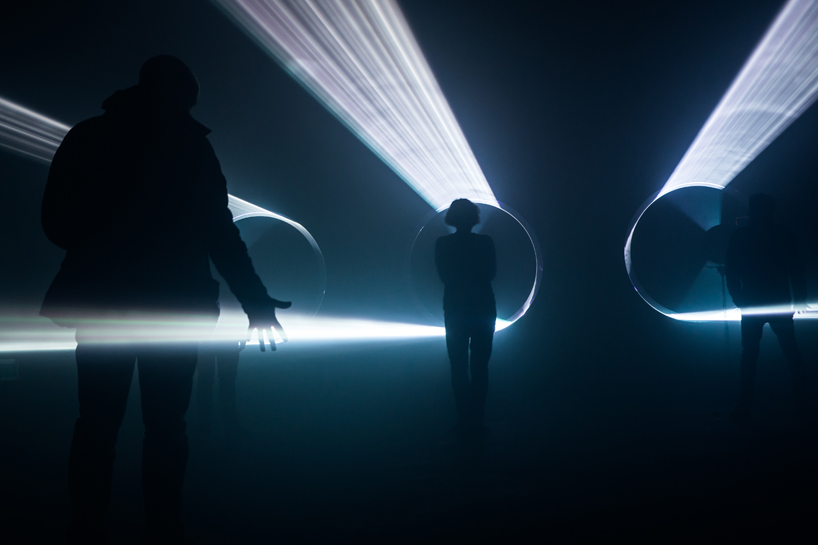
the light cylinder uses motion sensors to engage visitors in interactive dialogue. the visitors’ movements trigger feedback in the form of changes in colour and light, as well as atmospheric sound effects. this action and reaction generates an emotional connection between the installation and the visitors, who become its focal point, turning it into a personal experience through their movements.
behind the scenes with MINI and UVA for ‘parallels’
video courtesy BMW group
the three-part ‘parallels’ draws reference from MINI connected’s seamless transition between home, office and car – interpreting this connectivity as a palpable art form and invoking the most striking element of the new mini interface design: light – as illustrated by mini’s interactive LED ring. the signature ring encircles the new MINI central instrument and communicates silently with the driver via light impulses in different colors.
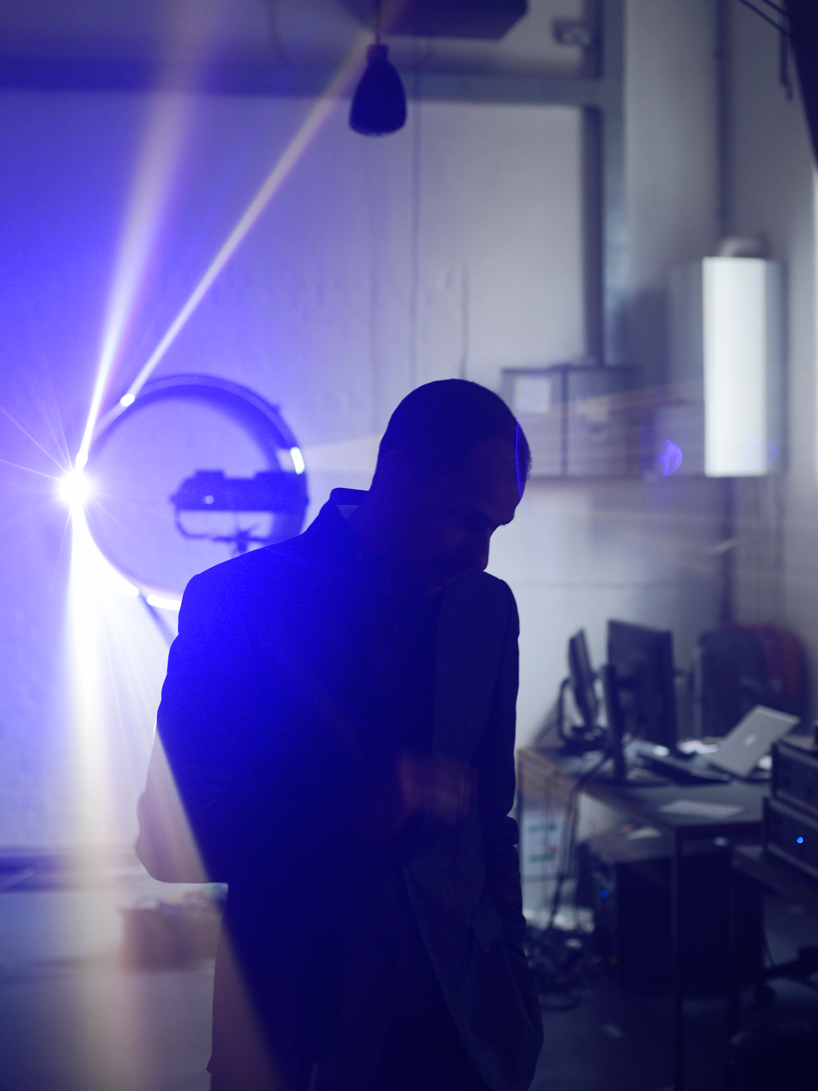
DB: what feeling do you get when you’re inside the laser tube?
AW: I feel perplexed and completely involved in this world of lighting. it’s amazing what it does to you when you’re inside of this three dimensional space. what you think, or what you experience when you see a picture of the installation is completely different than when you’re inside of this three dimensional space. it’s hard to describe to people how it feels to be inside of a laser tube, but when you’re inside of it, and the animation that goes around you, it’s perplexing and involving, very wonderful; but, at the same time this is what I have to say: I’m so excited about this project because there’s an intellectual level to the experience.
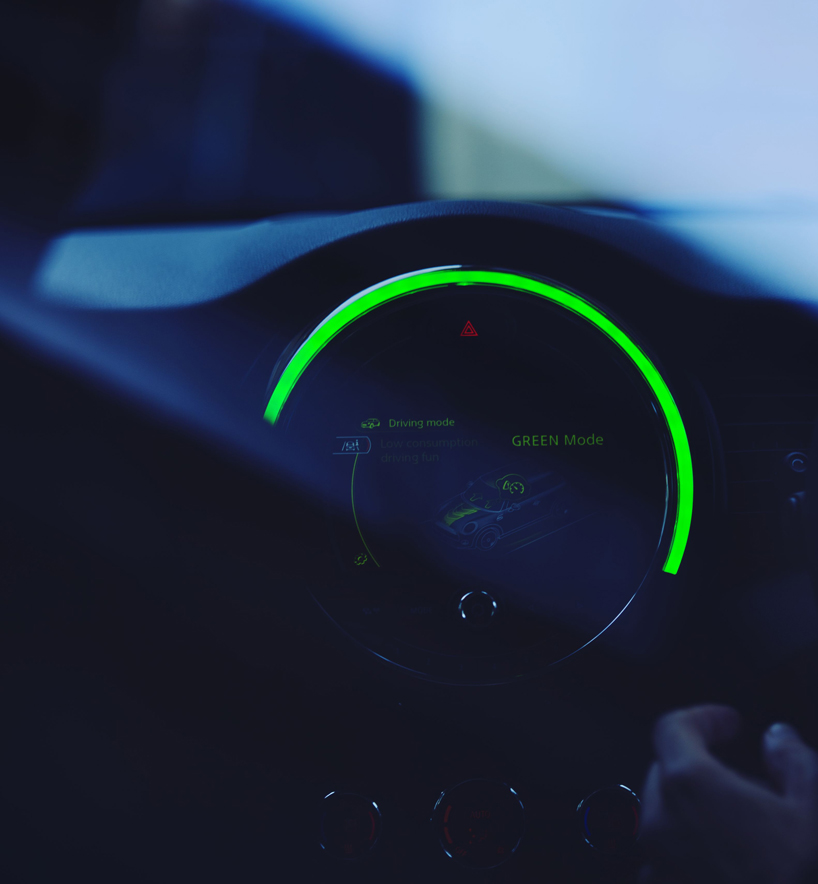
MINI connected system from inside the MINI cooper
DB: with the MINI connected system, where do you see the installation correlating the most?
AW: I think the most important thing is that we live in a world, being connected with a lot of very precise information when you’re inside our car. with the LED ring, we have an element in production that is giving you soft information. I actually like the word software because it’s soft. the light that comes on is a soft transition of lighting, just like the installation. if you want precise information you look at the pinnacle, you look in the tachometer. there you get precise information. but, if you want soft information, like incoming call blue tooth, it’ll just swirl around in blue. this is soft information, and this is something that I think will be increasingly important in the future of being connected. less facts, and commas, and zeros, more color that indicates that something is about to happen.
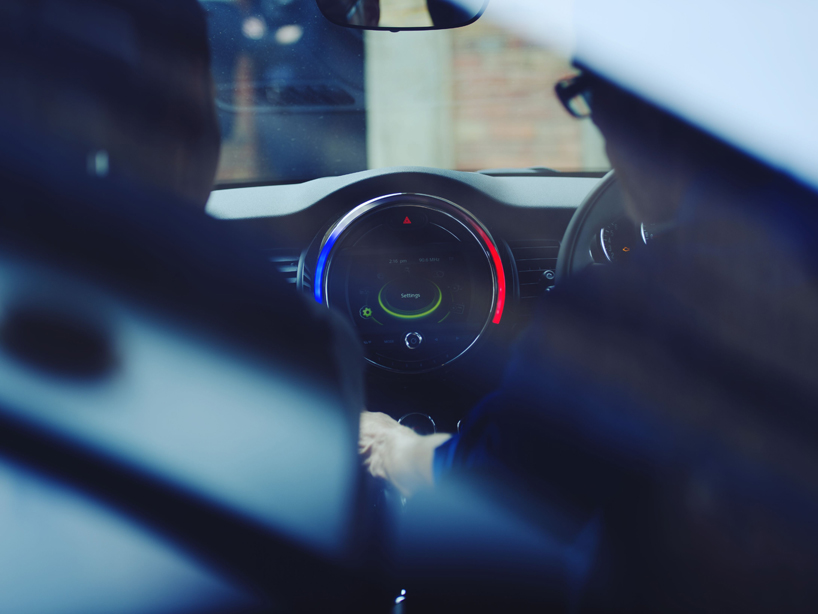
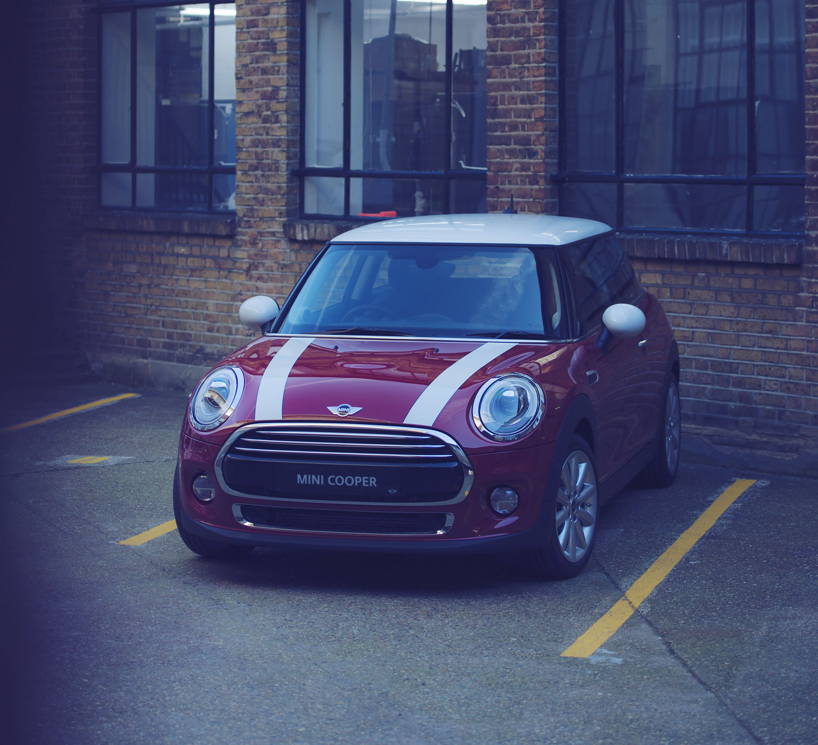
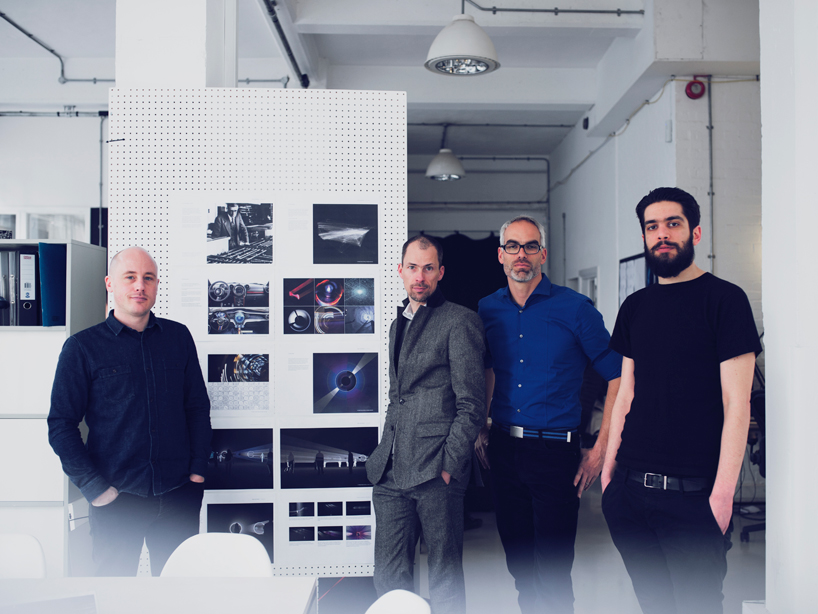
matthew clark (UVA), anders warming (head of MINI design), oliver sieghart (head of MINI interior design), alexandros tsolakis (UVA)
